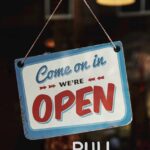Local link building stands as a cornerstone of successful local SEO, a strategic imperative for businesses aiming to dominate their localized search results. This intricate process involves acquiring backlinks from websites that are geographically relevant and topically aligned with your business, sending powerful signals of authority and trustworthiness to search engines, particularly Google. Unlike broader link building campaigns that focus on national or international domains, local link building zeroes in on proximity, community connections, and hyper-targeted online relationships. Its objective is not merely to accumulate links but to cultivate a robust digital footprint that validates a business’s standing within its specific geographic area. When Google evaluates businesses for local pack rankings or localized organic search results, it heavily weighs relevance, prominence, and proximity. Local links contribute significantly to the relevance and prominence factors, demonstrating that a business is an integral, respected part of its community’s digital landscape. The distinction from traditional link building is crucial: while the core principle of acquiring backlinks remains, the source and intent shift dramatically. Traditional link building might seek links from high-authority news sites or industry blogs regardless of their location, whereas local link building prioritizes a link from the local Chamber of Commerce, a neighborhood blog, a community sports team, or a local newspaper, even if their domain authority is lower than a national counterpart. These local endorsements are far more potent for local search algorithms, as they reinforce geographical relevance and legitimate local presence. The interplay between local links and the core mechanics of local search is fundamental, signaling to Google that a business is genuinely active, respected, and authoritative within its operational vicinity, ultimately enhancing visibility in queries with local intent.
The success of any local link building strategy hinges on four critical pillars: trust, relevance, diversity, and consistency. Trust is built when authoritative and respected local entities link to your website. A link from a local government portal, a well-established community organization, or a trusted local news source conveys immense credibility to search engines. These aren’t just arbitrary connections; they are endorsements that indicate your business is a legitimate and valued part of the local ecosystem. Relevance is arguably the most potent factor in local link building. This encompasses both geographic and topical relevance. A link from a local bakery to a local plumbing service, while geographically relevant, might lack topical alignment. However, a link from a local home improvement blog to that same plumbing service possesses both. Search engines are sophisticated enough to understand these nuanced relationships, prioritizing links that make logical sense within a local context. The proximity of the linking domain to your business’s physical location further amplifies this relevance, solidifying your local footprint. Diversity in link sources prevents an unnatural link profile and signals a wide range of organic connections. Relying solely on one type of link, such as directory listings, can appear suspicious or less impactful. A healthy backlink profile includes a mix of local citations, community sponsorships, guest posts on local blogs, mentions from local news sites, and partnerships with complementary local businesses. This varied approach mimics organic link acquisition patterns and strengthens your overall authority. Finally, consistency underscores the need for ongoing effort. Local link building is not a one-time project but a continuous process. Communities evolve, new opportunities arise, and maintaining a proactive approach ensures your business remains competitive and continually strengthens its local search visibility. Regular outreach, content updates, and active participation in local initiatives are essential for sustained growth in local rankings.
One of the foundational strategies for local link acquisition involves leveraging local citations and directories. A citation is an online mention of your business’s Name, Address, and Phone number (NAP). While not always containing a direct hyperlink, structured citations (listings in online directories) are crucial for local SEO because they validate your business’s existence and location to search engines. The absolute paramount rule for local citations is NAP consistency. Any discrepancies across directories—even slight variations in street names, suite numbers, or phone number formatting—can confuse search engines, dilute your authority, and hinder your local rankings. It is imperative to ensure your NAP information is identical across all online platforms, mirroring exactly what is listed on your Google My Business profile.
Primary directories form the bedrock of local citations. Google My Business (GMB) is the undisputed king; optimizing your GMB profile is the first and most critical step. Other essential platforms include Yelp, Bing Places for Business, Apple Maps, Facebook Business Pages, and industry-specific review sites like TripAdvisor for hospitality or Zocdoc for healthcare. Beyond these, niche-specific directories, relevant to your industry or city, offer highly targeted opportunities. For instance, a restaurant would benefit from listings on OpenTable or Grubhub, while a legal firm might seek inclusion in Avvo or FindLaw. City-specific directories, often run by local governments or tourism boards, also provide valuable, highly relevant citations.
Aggregators like Infogroup, Factual, Acxiom, and Localeze play a behind-the-scenes yet vital role. These companies collect and distribute business data to a vast network of online directories, mapping services, and GPS systems. Ensuring your business information is accurate and consistent with these aggregators significantly propagates correct NAP data across the web, building a strong citation foundation.
Best practices for submission and management involve a meticulous approach. Start by creating a comprehensive spreadsheet of all current and desired citation sources. Manually claim and optimize your listings on the most critical platforms (GMB, Yelp, Bing Places). For a larger scale, consider using local SEO management tools like Moz Local, BrightLocal, or Whitespark, which can help automate submissions to multiple directories and monitor NAP consistency. However, even with tools, manual verification and optimization are often necessary for top-tier directories. Regularly audit your existing citations to identify and correct any inconsistencies or outdated information.
Duplicate listing management is another critical aspect. Duplicates arise when a business moves, changes its name, or when multiple employees create separate listings. These duplicates can fragment your online presence and confuse search algorithms. Actively search for duplicate listings on major platforms and directories. If found, the best practice is to claim the duplicate, mark it as closed or a duplicate of the primary listing, and then request its removal or merge. Some platforms allow direct merging, while others require contacting support. Persistent vigilance in managing citations ensures a clean, consistent, and authoritative local online presence, which directly influences your local search rankings.
Local sponsorships and event involvement represent a powerful, authentic avenue for local link acquisition. By financially supporting community events, local charities, school sports teams, or cultural festivals, businesses not only demonstrate civic responsibility but also create legitimate opportunities for valuable backlinks. When sponsoring an event, your business name, logo, and often a link to your website will typically be featured on the event’s official website, promotional materials, or a dedicated sponsors page. These links are highly relevant as they come from local organizations with strong community ties. To find opportunities, actively engage with your local community. Monitor community calendars, local news outlets, and social media groups for upcoming events. Reach out to local schools, sports clubs, arts organizations, and non-profits. Many non-profits rely on local business sponsorships and are eager to list their supporters.
Structuring sponsorships for optimal link benefit involves clear communication with the event organizers. Inquire about their website and digital promotion plans. Confirm that your business name and a direct link to your website will be included on their site, ideally from a prominent page that is regularly crawled by search engines. If possible, negotiate for a descriptive anchor text that includes your business name or a relevant keyword, though brand mentions are often sufficient and more natural. Beyond a direct link, consider how your involvement can generate additional mentions or links. For example, if you sponsor a specific award or activity, ask if a dedicated page or blog post will be created for it, allowing for a more context-rich link. After the event, leverage your participation by issuing a press release to local media outlets, detailing your involvement and its positive impact on the community. Local news sites are often keen to cover stories about local businesses giving back, and a press release can lead to news articles with brand mentions and even valuable editorial links. Document your involvement with photos and videos, and share them on your own website and social media, further amplifying the message and creating content that others might link to. This approach transforms a philanthropic gesture into a strategic local SEO gain.
Engaging with local business associations and Chambers of Commerce is another highly effective strategy for acquiring authoritative local links. Membership in these organizations offers benefits far beyond traditional networking opportunities. Most Chambers of Commerce, business improvement districts (BIDs), and local industry associations maintain online directories of their members. Becoming a member typically grants you a listing on their website, which often includes a direct link back to your business’s website. These links are incredibly valuable because they come from highly authoritative local domains. Search engines recognize these organizations as legitimate entities representing the local business community, and a link from them signals credibility and local relevance for your business.
Beyond basic directory listings, many associations offer additional opportunities for visibility and links. Look for member spotlight sections, where they feature a different member each week or month with a dedicated write-up and a prominent link. Participate in association events, workshops, or committees; this engagement can lead to mentions on event pages, meeting minutes, or association newsletters, all of which can contain links. If you host a workshop or present on a relevant topic, the association might promote it with a link to your business. Actively engaging with the Chamber’s online resources, such as their blog or news section, can also present opportunities. Offer to contribute an article or provide an expert quote for their content, which can result in an author byline and a link back to your site. The key is not just to pay for a membership but to actively participate and seek out these link-building opportunities inherent in the association’s structure.
Local guest blogging and content collaboration extend your reach by tapping into established local online communities. The first step is to identify local blogs, news websites, or community portals that publish content relevant to your industry or general local interest. Use Google search operators like “intitle:local [your city] blog,” “[your city] + write for us,” or “local [your niche] blog” to uncover potential targets. Once identified, thoroughly research their content, audience, and editorial guidelines. The aim is to pitch relevant, high-quality content that genuinely benefits their readers, not just a thinly veiled promotional piece for your business. For example, if you own a local pet store, you could pitch an article to a local family blog on “Tips for Introducing a New Pet to Your Children” or “Understanding Local Pet Adoption Processes.”
Your pitch should be personalized, professional, and clearly outline the value you can bring to their audience. Focus on providing unique local insights, data, or practical advice. In exchange for your valuable content, you typically receive an author byline with a link back to your website, or a contextual link within the article itself. Beyond traditional guest blogging, explore other content collaboration avenues. Offer to be interviewed as a local expert for a piece they are working on, leading to a quote and a link. Suggest co-marketing initiatives, such as a joint webinar, a shared local guide, or a collaborative event that both businesses can promote on their respective websites, creating natural linking opportunities. The emphasis should always be on mutual benefit and providing value to the local audience, which naturally leads to high-quality, relevant backlinks.
While not direct link building in the traditional sense, local reviews and testimonials play an indirect yet significant role in enhancing your business’s local authority, which in turn aids in attracting links. Strong review profiles on platforms like Google My Business, Yelp, TripAdvisor, and industry-specific review sites signal to both search engines and potential customers that your business is reputable, trustworthy, and provides excellent service. When a business has a high volume of positive reviews, it builds a powerful social proof. This credibility makes other local entities, such as community organizations, local bloggers, or even local news outlets, more inclined to feature, mention, or link to your business.
Positive reviews can indirectly lead to link opportunities in several ways. Firstly, a highly-rated business is more likely to be included in “best of” lists published by local media or blogs, which often include links. Secondly, satisfied customers or local partners might share their positive experiences on their own blogs or social media, linking back to your site. Thirdly, a strong review profile enhances your local pack rankings, increasing your visibility and making it easier for potential linking partners to discover your business. Actively solicit reviews from satisfied customers through various methods: direct requests, follow-up emails, or even QR codes in your physical location. Make the review process as easy as possible. Equally important is responding to all reviews, both positive and negative. Thoughtful responses demonstrate engagement and customer care, further boosting your online reputation. By cultivating a stellar review profile, you create an environment where local entities are more willing and eager to associate with your business through links and mentions, indirectly bolstering your local link building efforts.
Broken link building with a local focus is an advanced yet highly effective strategy. The premise involves finding broken links (404 errors) on relevant local websites and then reaching out to the website owner to suggest your content as a replacement. This approach is mutually beneficial: you help the website owner fix an issue on their site (improving their user experience and SEO), and in return, you acquire a valuable backlink. To execute this, start by identifying potential local websites within your niche or geographic area. These could be local news archives, community resource pages, local blogs, or even websites of complementary local businesses. Use backlink analysis tools like Ahrefs, SEMrush, or Moz Link Explorer to audit these sites for broken outbound links. Alternatively, browser extensions like Check My Links or LinkMiner can quickly identify broken links on any page you visit.
Once broken links are identified, analyze the context of the defunct content. Does it align with something you’ve already published or could easily create? For instance, if a local tourism site has a broken link to an old guide on hiking trails, and you’ve recently published an updated, comprehensive guide to local outdoor activities, you have a perfect opportunity. Your outreach email should be polite, concise, and helpful. Start by notifying them about the broken link, clearly stating where it’s located. Then, briefly explain why your content is a suitable replacement, highlighting its quality and relevance. Avoid sounding demanding; frame it as a helpful suggestion. This strategy leverages reciprocity and provides genuine value, making it a highly successful tactic for acquiring relevant local backlinks. The key is persistence and a keen eye for finding truly relevant broken link opportunities that align with your content offerings.
Creating local resource pages and guides is an exceptional content-driven strategy for attracting organic local links. These are comprehensive, valuable pieces of content that compile useful information about your local area or industry within that area. Examples include: “The Ultimate Guide to [Your City]’s Craft Breweries,” “Top 10 Family-Friendly Activities in [Your Town],” “A Comprehensive Guide to Local Farmers Markets in [County Name],” or “Essential Resources for Small Business Owners in [Neighborhood].” The key is to make these guides genuinely useful, detailed, and regularly updated. Include relevant local businesses (even competitors, if it adds value to the user), local attractions, events, services, or historical information. Incorporate maps, photos, and unique local insights.
Once your resource page is published, the link-building phase begins. Identify local businesses, tourism boards, schools, community organizations, non-profits, or even local government sites that might find your guide useful for their visitors or constituents. For example, a local tourism board would benefit from linking to a well-researched guide on local attractions. A local school might link to a guide on educational resources or family activities. A local business association could link to a guide on local economic development. Reach out to these entities with a personalized email, explaining the value of your resource and how it could benefit their audience. Frame it as a mutually beneficial addition to their website. This strategy positions your business as a local authority and a valuable community resource, making it highly attractive for other local sites to link to your content, naturally building high-quality, contextually relevant backlinks.
Local partnerships and joint ventures offer a symbiotic approach to local link building, creating mutually beneficial relationships that naturally generate backlinks. Identify complementary local businesses—those that serve a similar customer base but do not directly compete with your services. For instance, a local real estate agent could partner with a local moving company, a local interior designer, or a local home cleaning service. A local coffee shop might partner with a local bookstore or an artisan bakery. The possibilities are vast and depend on your industry.
Once potential partners are identified, propose collaborative initiatives. This could involve cross-promotion, where each business promotes the other on their website, social media, and in-store. A shared event, such as a workshop, a charity drive, or a product launch, provides excellent opportunities for both businesses to link to the event page and each other’s websites in their promotional materials. Consider creating a joint resource or service offering that benefits both customer bases. For example, a local fitness studio and a local health food store could collaborate on a “Healthy Living Challenge,” with dedicated pages on both websites linking to each other. Reciprocal links, when genuinely earned through such partnerships and not merely exchanged, are highly effective. The key is to focus on creating value for customers through the partnership, making the links a natural byproduct of the collaboration. This approach fosters strong community ties while simultaneously enhancing your local SEO through relevant, trusted backlinks.
Establishing local scholarships or bursaries is an often-overlooked yet incredibly powerful strategy for acquiring high-authority local links, particularly from educational institutions. By setting up an annual scholarship fund for local high school students, college students, or trade school trainees, your business creates a compelling reason for educational institutions to link to your website. Schools, colleges, and universities maintain dedicated “scholarship” or “financial aid” pages on their websites where they list available scholarships for their students. A link from an academic institution’s .edu domain carries immense authority and credibility in the eyes of search engines.
To implement this, define the scholarship criteria (e.g., academic merit, specific field of study, financial need, essay requirement). Determine the scholarship amount and the application process. Create a dedicated page on your business website detailing the scholarship, its eligibility, application instructions, and deadlines. This page will be the target for the backlinks. Once the scholarship page is live, reach out to local high schools, community colleges, and universities within your service area. Contact their guidance counselors, financial aid offices, or scholarship administrators. Inform them about your new local scholarship and provide them with the direct link to your scholarship page. They are typically eager to share new opportunities with their students and will often add your scholarship to their official scholarship resource pages. This strategy requires a financial investment, but the long-term SEO benefits from high-authority, incredibly relevant local backlinks can be substantial, cementing your business as a pillar of the local community.
Local PR and media outreach provide a unique avenue for securing highly authoritative and diverse backlinks from local news outlets, community newspapers, radio stations, and online magazines. The goal is to generate newsworthy stories about your business that local media will be interested in covering. This is not about sending out generic press releases; it’s about identifying angles that resonate with the local community and current events. What makes your business unique? Have you achieved a significant milestone, like a major anniversary or expansion? Have you launched an innovative new service or product that addresses a local need? Are you involved in a unique community initiative or charity event? Has your business overcome a significant challenge or demonstrated remarkable resilience?
Craft compelling pitches that highlight the local relevance and human interest aspect of your story. Send targeted emails to local journalists, editors, and producers, briefly outlining your story idea and why it matters to their audience. Provide clear, concise information and be prepared to offer interviews or additional details. A well-placed story can result in news articles, online features, or broadcast segments that include mentions of your business and, crucially, direct links back to your website. These links are editorial, earned, and come from highly trusted local sources, making them exceptionally valuable for local SEO. Building relationships with local media contacts over time can lead to ongoing opportunities for coverage and consistent link acquisition, positioning your business as an established and newsworthy entity within the local landscape.
Infographics and visual content focused on local data offer an engaging and shareable way to attract backlinks. People are naturally drawn to visual information, and if that information is highly specific and relevant to their local area, it significantly increases its shareability and link potential. Consider creating infographics that present interesting local statistics, historical data, demographic trends, survey results specific to your community, or comparisons of local amenities. For example, a real estate agency could create an infographic detailing local housing market trends, average property prices by neighborhood, or the evolution of local architecture. A restaurant could create an infographic showcasing the history of local cuisine or highlighting the economic impact of local farmers’ markets.
The key is to use reliable data sources and present the information in a visually appealing, easy-to-understand format. Once the infographic is created, publish it on your website with an embed code, making it simple for others to share and link to. Then, actively distribute it to relevant local blogs, news sites, community organizations, and even local government departments that might find the data useful for their audiences. When pitching, emphasize the value of the local data and how it can enrich their content. Many local sites are looking for unique, engaging content, and a well-researched, visually appealing infographic fits the bill perfectly. This strategy leverages the power of visual communication to generate organic shares and high-quality, contextually relevant backlinks from local sources.
Podcasts, particularly those with a local focus, represent an emerging yet potent channel for local link building and brand exposure. There are two primary approaches: being a guest on local podcasts or hosting your own local podcast. Being a guest on local podcasts allows you to tap into an existing audience interested in local topics. Search for podcasts that cover local news, community events, local business, or specific niches relevant to your business within your geographic area. Reach out to the podcast hosts with a compelling pitch, offering to share your expertise on a relevant topic or discuss a unique aspect of your business. For instance, if you own a local bookstore, you could discuss local literary events or the history of reading in your community. When you appear as a guest, the podcast’s website or show notes will almost always include a link to your business website or social media profiles, providing a valuable backlink.
Hosting your own local podcast offers even greater control and long-term potential. While it requires more effort, it positions you as a thought leader in your community. You can invite local experts, business owners, community leaders, and local personalities as guests. Each guest will likely share the episode on their own platforms, often linking back to your podcast’s website or specific episode page, thereby creating a reciprocal link opportunity. You can also interview local customers, highlighting their stories and experiences, which they might share and link to. Furthermore, episode show notes will naturally include links to your guests’ websites and any resources discussed, creating a rich network of local links. Promoting your podcast on local community forums, social media groups, and through local media can also lead to mentions and links from other local entities. This strategy builds authority and relevance over time, leading to a robust local link profile.
To effectively execute a local link building strategy, leveraging the right tools and resources is indispensable. For managing and auditing local citations, tools like Whitespark, Moz Local, and BrightLocal are invaluable. Whitespark’s Local Citation Finder allows you to discover citation opportunities based on top-ranking competitors, and their Citation Checker helps audit existing citations for inconsistencies. Moz Local simplifies the process of distributing consistent NAP data to major data aggregators and directories. BrightLocal offers comprehensive citation building, auditing, and monitoring services, helping businesses identify where they need to improve their citation profile. These tools are critical for ensuring NAP consistency, which is the bedrock of local SEO.
For in-depth backlink analysis and prospecting, industry-standard SEO tools like Ahrefs, SEMrush, and Moz Link Explorer are paramount. Ahrefs’ Site Explorer can reveal your competitors’ backlink profiles, identifying local sources they’ve acquired links from. Its Content Explorer can help you find popular local content that has attracted links, giving you ideas for your own content strategy. SEMrush offers similar capabilities with its Backlink Analytics and Gap tools, allowing you to discover link opportunities that your competitors are capitalizing on but you are not. Moz Link Explorer provides metrics like Domain Authority (DA) and Page Authority (PA), helping you assess the strength of potential linking domains. These tools are essential for identifying potential link partners, analyzing their authority, and uncovering broken link opportunities on local websites.
Beyond specialized SEO tools, understanding how to use Google Search Operators effectively can supercharge your local prospecting. Operators like “site:.gov [your city] inurl:links” can help find local government resource pages that link out. “[your city] + ‘local resources'” or “[your city] + ‘community directory'” can uncover relevant local directories. “[your city] + ‘write for us’ blog” or “[your city] + ‘guest post’ news” can help identify local guest blogging opportunities. Combining these operators with relevant keywords related to your niche allows for highly targeted research. Keeping an updated list of local business directories, industry-specific directories, and community organizations relevant to your area is also a fundamental resource. This combination of specialized tools and smart manual research forms the backbone of a successful local link building campaign.
Measuring the success of local link building is crucial for demonstrating ROI and refining your ongoing strategy. Key Performance Indicators (KPIs) provide tangible metrics to track progress. The most direct KPI is the number of local referring domains. While quantity isn’t everything, an increase in unique, relevant local domains linking to your site indicates a growing and strengthening local backlink profile. Beyond just the number, assess the quality and relevance of these domains. Are they from authoritative local sources? Do they make sense contextually?
More importantly, track the increase in local organic traffic. Ultimately, the goal of local link building is to drive more relevant visitors to your website from local search queries. Use Google Analytics to segment your traffic by geographic location and monitor organic traffic growth from your target local areas. Improved local pack rankings and localized organic keyword rankings are also direct indicators of success. Monitor your position in the Google Local Pack (the map results) for your primary local keywords. Tools like BrightLocal or Local SEO Rank Tracker can help automate this monitoring. An uplift in these rankings signifies that your link building efforts are positively influencing Google’s perception of your local authority.
Increased brand mentions, even without direct links, contribute to overall prominence and can be tracked using tools like Google Alerts or social listening platforms. While not direct links, these mentions indicate growing brand awareness and influence within the local community, which can attract future links. Lastly, monitor the improvement in your website’s domain authority (DA) or trust flow (TF) as reported by tools like Moz or Majestic. While these are third-party metrics and not directly used by Google, they offer a general indication of your website’s overall link equity and perceived authority, which local links contribute to. Regularly auditing your existing links to ensure their quality and disavowing any harmful or spammy links is also an ongoing optimization task. Finally, stay adaptable to algorithm updates; local SEO is dynamic, and what works today might need slight adjustments tomorrow. Continuous monitoring and strategic adaptation are key to sustained success.
Navigating the landscape of local link building requires adherence to best practices and an awareness of common pitfalls. The most critical pitfall to avoid is engaging in spammy tactics. This includes participating in Private Blog Networks (PBNs), purchasing links from low-quality link farms, or engaging in excessive link exchanges (reciprocal linking purely for SEO benefit). Google’s algorithms are highly sophisticated at detecting these manipulative tactics, and being caught can lead to severe penalties, including de-indexing your website from local search results. The focus must always be on quality over quantity. A few highly relevant, authoritative local links are far more valuable than dozens of low-quality, irrelevant ones. Prioritize links from genuine local businesses, organizations, and reputable community sites.
NAP consistency is paramount, as repeatedly emphasized. Even minor inconsistencies across your local citations can dilute your local SEO efforts. Regularly audit your NAP data across all platforms to ensure uniformity. Prioritize local relevance in all your link acquisition efforts. A link from a national site, even a high-authority one, holds less weight for local SEO than a link from a local Chamber of Commerce or a local news outlet, even if the latter has lower domain authority. The geographic relevance is key for local search algorithms.
Be patient and persistent. Local link building is a long-term strategy. It takes time to build relationships, create valuable content, and secure high-quality links. Do not expect overnight results. Consistency in your outreach and content creation efforts will yield results over time. Finally, always engage in ethical link acquisition. This means earning links through valuable content, genuine relationships, and community engagement, rather than trying to manipulate search engines. Understanding and adhering to Google’s Webmaster Guidelines regarding link schemes is non-negotiable. Ethical practices not only protect your site from penalties but also build a sustainable and resilient local SEO foundation.
Local link building does not exist in a vacuum; it profoundly interacts with other critical local SEO factors, creating a synergistic effect that amplifies your overall local search visibility. Google My Business (GMB) Optimization is the primary interaction point. A fully optimized GMB profile, with accurate information, compelling descriptions, relevant categories, high-quality photos, and consistent posting, lays the groundwork. Local links then serve to validate and enhance the authority of that GMB profile in Google’s eyes. The more authoritative and relevant links pointing to your website (which should be linked from your GMB profile), the stronger signal Google receives that your business is a legitimate, important entity in its local area, boosting your GMB’s prominence in local pack results.
On-Page Local SEO is another vital component. This involves optimizing your website’s content for local keywords (e.g., “plumber in [city name],” “best coffee shop [neighborhood]”). Incorporating location-specific keywords naturally into your title tags, meta descriptions, headings, and body content, along with detailed service area pages, strengthens your relevance. Local link building then reinforces these on-page signals. When a local blog links to your “Best [City] Plumber” page, it tells Google that other local entities endorse your claim of being a top plumber in that city. Implementing Schema Markup for local businesses (LocalBusiness schema) also provides structured data about your business to search engines. While links don’t directly interact with schema, a robust link profile bolsters the authority of the information provided via schema, making it more likely for Google to trust and display it in rich snippets.
Local Content Marketing goes hand-in-hand with local link building. Creating valuable, locally-focused content (e.g., local guides, neighborhood spotlights, community event calendars) not only attracts local users but also provides natural assets for others to link to. If your content is genuinely useful to the local community, other local websites will link to it organically as a resource. This content-driven approach to link building is highly effective and sustainable.
Mobile Optimization and User Experience (UX) are foundational for any website, including those focused on local SEO. Google prioritizes mobile-first indexing, meaning your site must be fast, responsive, and easy to navigate on mobile devices. A positive UX (fast loading times, intuitive navigation, clear calls to action) reduces bounce rates and encourages longer dwell times, which are indirect ranking signals. While not directly a link building factor, a poor mobile experience or UX will negate the benefits of even the strongest local link profile, as users and search engines will quickly abandon a frustrating site. Conversely, a fantastic user experience makes your site more attractive for others to link to and share. In essence, local link building acts as a powerful amplifier for all these other local SEO efforts, transforming a well-optimized website into a dominant force in local search results.











